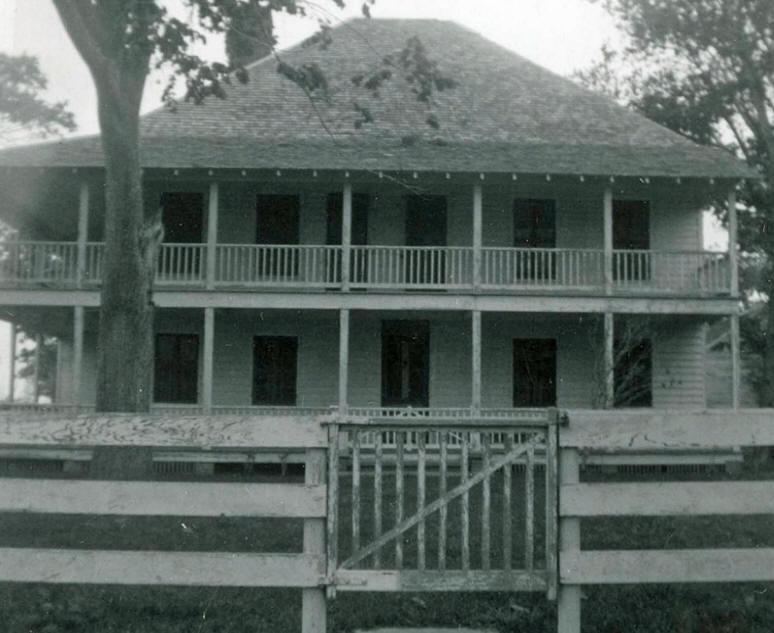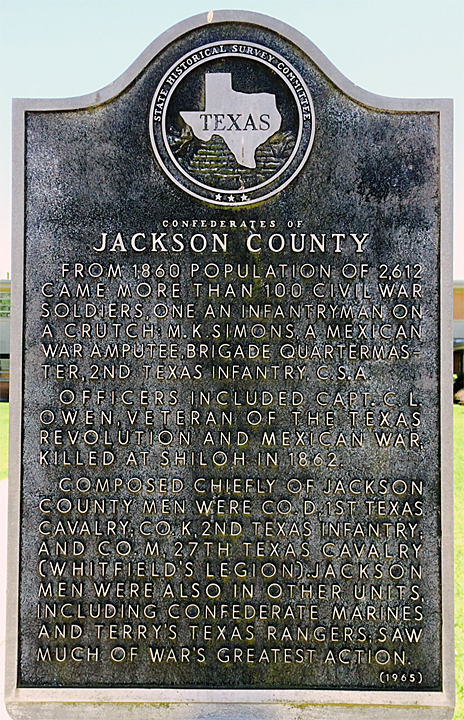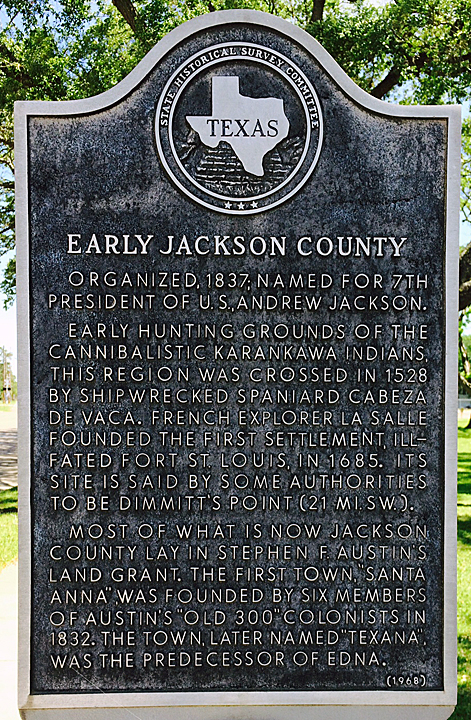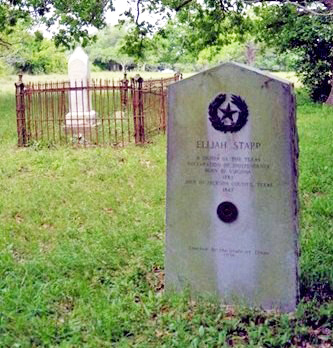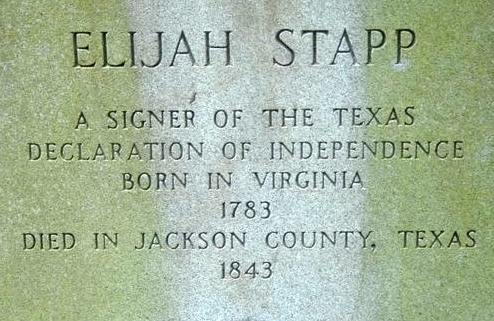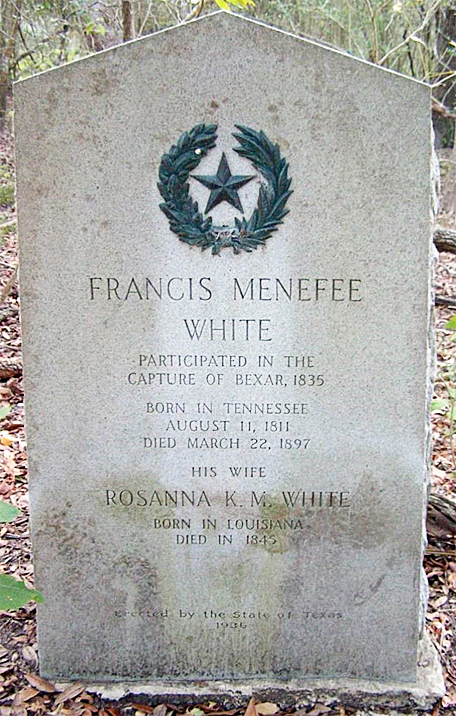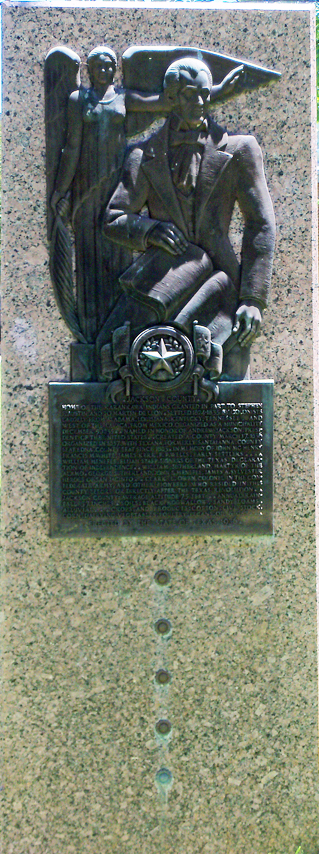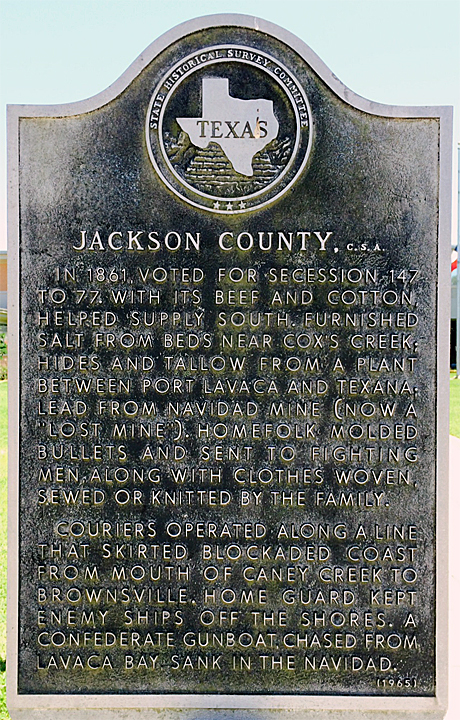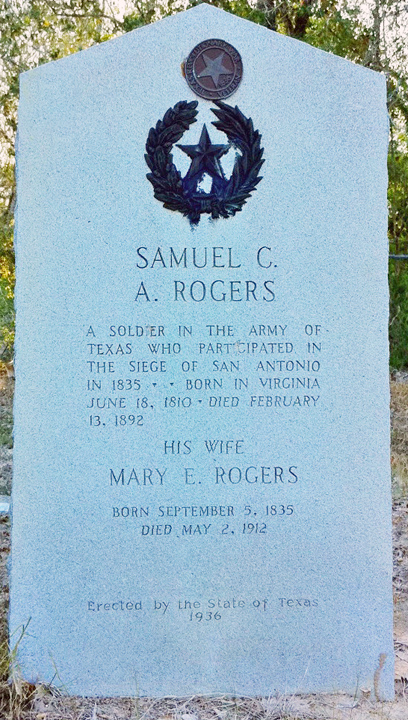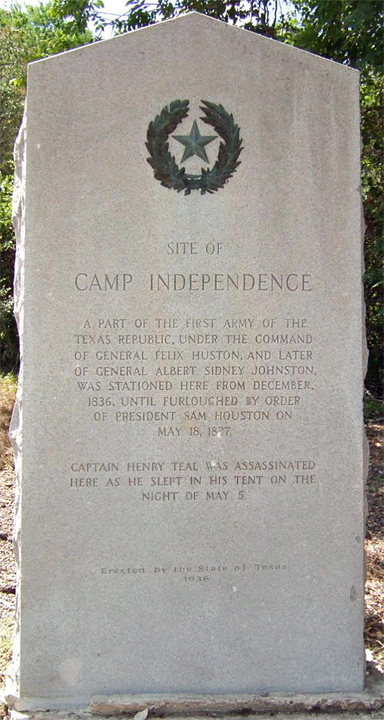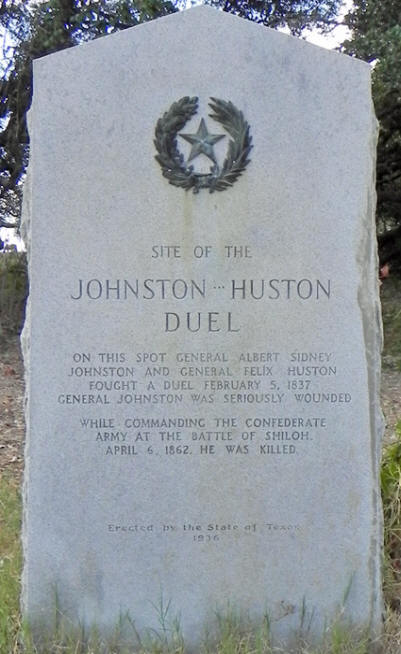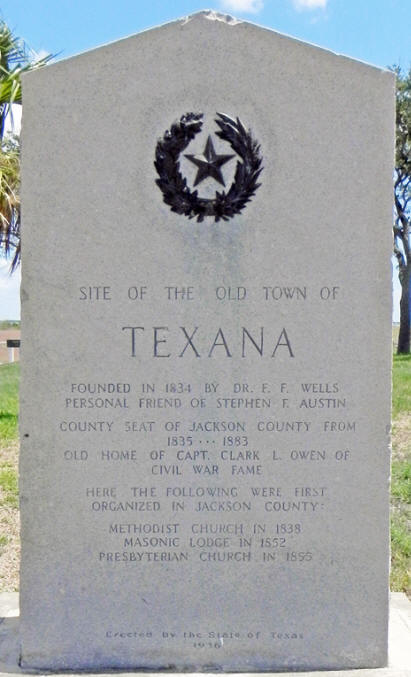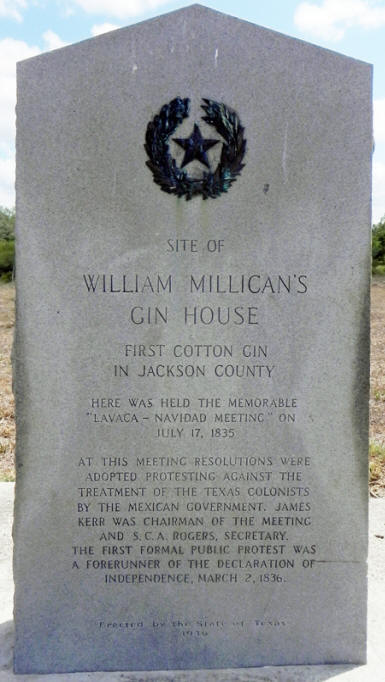|
The Navidad and Lavaca
Meeting
On the 17th of July a large meeting was held of the citizens on and
near the Lavaca and Navidad rivers, at the ginhouse of William
Millican. Its members lived in a territory twenty miles wide by
fifty in length, in which there was no town. They were all farmers
and not a politician or professional man among them. Major James
Kerr, the oldest inhabitant, was elected president, and Samuel C. A.
Rogers (in 1891 living in the same vicinity), was made secretary.
There never was on the soil of Texas a better average population.
George Sutherland, who afterwards led a company in storming Bexar,
and had a horse killed under him at San Jacinto (and his son,
William, then also present, killed in the Alamo) who had been in the
legislatures of both Tennessee and Alabama and in the Texas
conventions of 1832 and 1833, was there. John Alley, who also led a
company under Milam in storming Bexar, with his brothers, Thomas and
William, was there. The veteran, John McHenry, who had fought for
liberty in South America, followed Long and suffered imprisonment
with Milam and John Austin, was there. Andrew Kent, who afterwards
gave up his life in the Alamo, had come thirty-five miles to be
there. John S. Menefee, a soldier at San Jacinto, was there with his
venerable father, Thomas Menefee, and his younger brother, George
S., Bazil Durbin was there. S. Addison White, a soldier of Velasco,
with his father, Archibald S., and his brothers, John M. and James
G., was there. Francis M. White, subsequently in the storming of
Bexar (a legislator, commissioner of the land office, and yet living
honored and loved), was one of the assembly. So was Patrick Usher, a
worthy son of North Carolina, yet to be a gallant soldier, a judge
and a legislator and finally to die a prisoner in Perote. And with
all these were assembled the adult members of the families of Dever,
Heard, Wells, Stapp, Williams, Coleman, New, Looney, Scott, York,
Andrews, Millican, Guthrie, Beatty, Whitson, Hatch, Benj. J. White,
Milby, McNutt, Felix B. Earnest and Paul Scarborough (both destined
to perish as Santa Fe, prisoners) and Keller and others, composing a
first class population of farmers, far removed from any town or
center of political agitation. These facts are stated because of the
unjust assertion of more than one contributor to the history of that
momentous period that the War Party, or as sometimes stigmatized,
the "demagogues," "agitators," and "fanatics," were found in the
towns, while the farmers generally composed what was
inappropriately called the Peace Party. There was no
unconditional Peace Party, beyond an insignificant little nest of
tories, who received the prompt attention of Gen. Houston,
immediately after the battle of San Jacinto, the commanding agent in
which prompt attention was Capt. D. L. Kokernot (late a venerable
citizen of Gonzales County, under whom served also a recently
arrived youth from New York bearing the name of Charles A. Ogsbury,
late a well-known citizen and ex-editor of Cuero, Texas). On the
contrary, the farmers most exposed geographically to Mexican
vengeance--as those on the Navidad, Lavaca, Guadalupe and west side
of the Colorado--generally belonged to or sympathised with the War
Party, while the most conspicuous advocates of the other element in
the country resided in the towns. But it is repeated again and
again, that these differences of opinion, changed more or less by
every fresh arrival from Mexico, constituted no conclusive index to
the patriotism of the country. With the same degree of conviction as
to the unalterable designs of Santa Anna and his supporters for the
subjugation and ruin of Texas, all were for war, and all for
independence, as a few short months abundantly demonstrated.
The Navidad meeting, thus auspiciously constituted, after a free and
full interchange of views, unanimously declared--
Their belief that Santa Anna was hostile to State sovereignty and
the State constitution:
That they would oppose any force that might be introduced into Texas
for any other than constitutional purposes:
That, whereas, there were then at Goliad two hundred infantry en
route to reinforce the garrison at Bexar (as promised by Cos in his
letter to Tenorio), they called upon the Political Chief to
intercept them, and, as a greater guaranty against invasion, to take
the necessary steps to capture and hold Bexar.
That they favored a general consultation of delegates from all the
municipalities of Texas.
They concluded by calling on the militia to hold themselves in
readiness to march at a moment's warning, which the militia did, as
was proven by the alacrity with which, when the emergency arrived,
the companies of Captains Alley and Sutherland marched to the seat
of war at Gonzales and San Antonio de Bexar.
These spirited proceedings were promptly reported at San Felipe and
other places. There was a lull at San Felipe, however, caused by
awaiting the report of Gritten and Barrett, who had been sent, as
will be seen, on a mission to Cos. The people at Gonzales, however,
warmly approved the Navidad resolutions, as shown in a letter of
July 25th, from James B. Patrick to James Kerr.
History of Texas: From 1686-1892, by John Henry Brown, Volume
1, pages 297-299
|


